The Joy and Importance of Nursery Rhymes
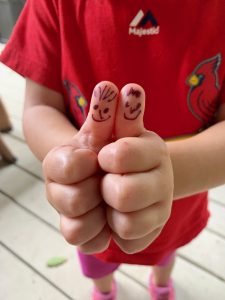
Where is Thumbkin? Where is Thumbkin?
Here I am. Here I am.
How are you today, sir? Very well, I thank you.
Run away. Run away.
Ah, kindergarten with Mrs.Smith. I assumed that all kindergarten teachers had a piano and worked on fingerplays and nursery rhymes with a group of children hiding Thumbkin behind their backs. Every day, I gleefully recited nursery rhymes and fingerplays with my friends on the carpet.
Today, I am a wee bit worried that—as we rush to get our children “ready for kindergarten”—nursery rhymes have fallen off of our radar. In our age of political correctness, these outdated collections of songs and rhymes have been all but forgotten. Yet, nursery rhymes are enjoyable and important tools for the development of pre-literacy and pre-math skills. Rhyme, rhythm and repetition can be used to draw children into a great book or song—and the repetition of words is the first step to recognizing patterns in math.
Let’s go back to kindergarten with Mrs. Smith for a moment. When she asked us to use our thumbs to portray little characters in the Thumbkin story rhyme, Mrs. Smith was introducing us to symbolic thinking. When children begin to understand symbols, they are also beginning to understand numbers and letters, which are really just symbols for quantities and concepts. Rhymes, songs and movement are tried-and-true teaching tools for children who are learning to count.
One, two, three four, five,
Once I caught a fish alive,
Six, seven, eight, nine, ten,
Then I let it go again.
When choosing books to read to your classroom, look for books that have only one rhyme per page. Our infants and toddlers enjoy board books that feature only one rhyme for the entire book. These books enrich the learning experience with visually stimulating illustrations as they introduce children to language that they may not hear at home.
When books aren’t in the hands of your early learners, add props, puppets or daily opportunities to bring these rhymes to life.
One, Two, Buckle My Shoe! Itsy, Bitsy, Spider A Tisket, A Tasket
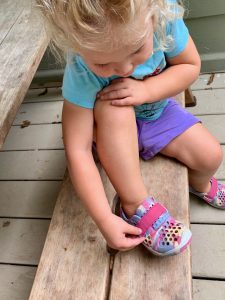

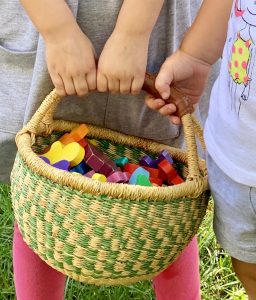
You will see such looks of pride as the children in your care recite their first memorized verse! If your child or class has mastered “One, Two, Buckle My Shoe!” or “ Itsy, Bitsy Spider,” you already know that the rhythms and tunes of these nursery rhymes can be addictive to toddlers and preschoolers.
Nursery rhymes are also full of numbers, patterns, sequencing and counting forward and backward. Children learn to add as they count forward and subtract as they count backward. Some rhymes add “one more” or “one less” as the rhyme progresses.
Rhymes that involve finger counting do more than develop fine-motor skills. They also teach children that fingers can represent numbers when the children are holding their fingers up and counting on their fingers. These patterns lay the foundation for mathematical predictions and reasoning skills. The practice of fingerplay promotes the development of coordination and fine-motor skills in young children—skills that are critical for tasks such as holding a pencil when children enter elementary school. We also use finger puppets and hand puppets when we work on our nursery rhymes, which help children develop their finger and hand muscles. Fingerplays for toddlers don’t need to be longer than three or four lines. “This Little Piggie” or “Round and Round the Garden” are great choices for our early learners.
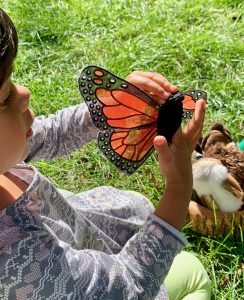

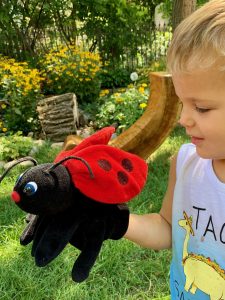
As Mem Fox—the award-winning author of more than 40 children’s books and a retired associate professor of literacy studies—notes in her book, Reading Magic (Harcourt, 2001): “If children know eight nursery rhymes by heart by the time they’re four years old, they’re usually among the best readers by the time they’re eight.”
My former teacher, Mrs. Smith, shared her love of music, math and fine-motor skills during circle time when I was young. I urge you to bring these rhymes back into your classroom and use them when the children in your care are lining up for recess, waiting for their parents or making other transitions during the day.
Play Mrs. Smith’s version of “Where is Thumbkin?”
Interested in using nursery rhymes with your early learners? Take a look at some of my favorite books:
Mother Goose: Four Classic Board Books by Sylvia Long (Chronicle Books, 2016)
Ten Little Fingers and Ten Little Toes padded board book by Mem Fox (HMH Books for Young Readers, 2010)
Humpty Dumpty and Other Nursery Rhymes by Lucy Cousins (Dutton Juvenile, 1996)
Big Fat Hen by Keith Baker(HMH Books for Young Readers, 1997)
I don’t know what political correctness has to do with nursery rhymes, but I enjoy them as much as the kids do! It’s a part of our oral tradition, and they’re good for recognizing patterns!
I have been shocked lately at how many nursery rhymes my school age students don’t know. It doesn’t surprise me that these are the same students who struggle in math and reading. Without these basics how can they build their understanding of more complex skills. Nursery rhymes and finger plays set the stage for so many crucial development milestones.
Oh, Sarah! As sad as this is, I am thrilled that you are the teacher in that room! That insightful observation leaves me smiling that you are THAT teacher that not only catches them up but gets those students closer to or meeting current grade level standards. Thank you for reminding me how very important this foundation of brain and math development, through simple play, is so vitally important to our youngest learners! Good luck, and thank you for sharing!
i am 9 years old not a 5 year old
Rhymes are enjoyable and important tools for the development of pre-literacy and pre-math skills. Rhyme, rhythm and repetition can be used to draw children into a great book or song—and they can start to reconaize patterns
Age is just a number, I have some experiences with my students older siblings at the pick up time asking to join the toddlers group to sing the rhyme. One of the classics and favorite is the Itsy, Bitsy, Spider. I have the book which they follow singing, doing mimics from the begging to the end.
Nursery rhymes and songs are important. Some of them teach children about patterns.
I love teaching nursery rhymes to my students, we like to do monthly projects with each of our nursery rhymes.
Oh, that’s a wonderful idea!
Learning about nursery rhymes that can help the children learn through math an numbers and measurements.
I have always used finger plays and songs in every age group I have taught. My favorite room to sing is the infant room. They love the action in finger plays and just look at me in wonder as they learn and participate. If I am doing morning breaks in each classroom that is my go to. I know many finger plays and songs so that is what I do to keep them busy while the main teacher is gone. I have been in child care for many years and know more than most teachers, so I like to pass on my knowledge.
I love getting our nursery rhyme books out for the littles.
I enjoyed reading the article about nursery rhymes and patterns and yet another reason to keep nursery rhymes in the preschool classroom.
I love using nursery rhymes. I use them as a transition when waiting for friends to get ready to go outside as well as going inside.
Its great to use nursery rhymes in school. I love that it is early math
nursery rhymes are great! i have been using them for 32 years!